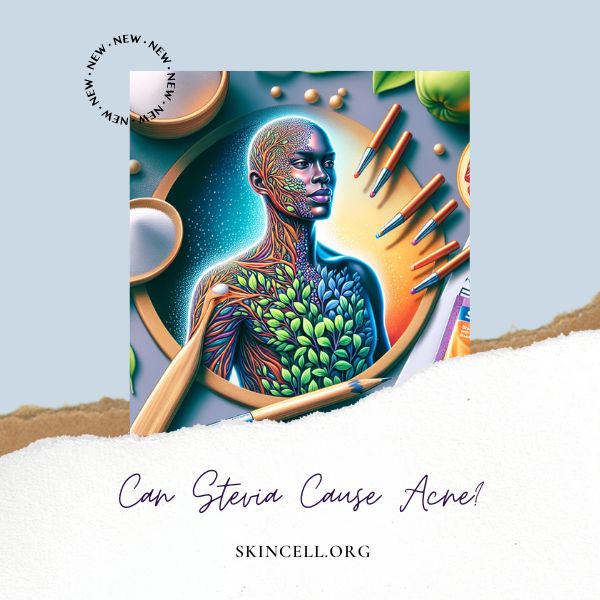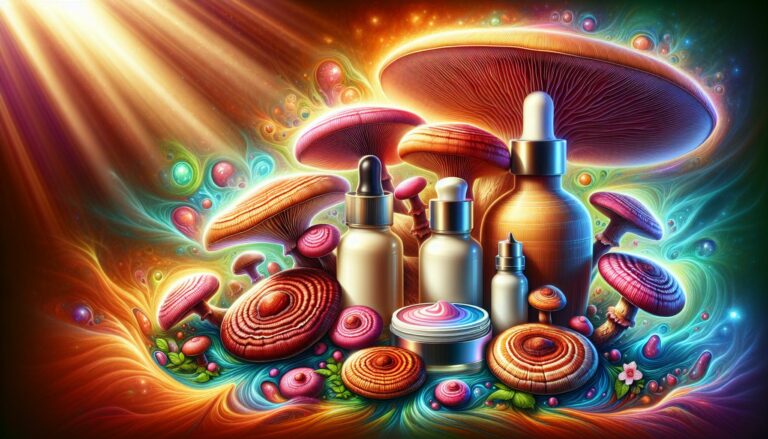Can Stevia Cause Acne?
You’ve probably heard the buzz around stevia, the natural sweetener that’s taken the health world by storm.
It’s touted as a zero-calorie alternative to sugar, promising to sweeten your life without the added guilt. But amidst its growing popularity, there’s a lingering question that might have crossed your mind: can stevia cause acne?
Navigating the world of natural sweeteners can be a maze, especially when you’re trying to keep your skin clear and glowing.
Understanding how what you eat affects your skin is crucial, and stevia’s impact on acne is a topic worth exploring.
Let’s dive in.

Myths and Facts About Stevia and Acne
When considering stevia and its effects on acne, it’s crucial to separate fact from fiction. You’ve likely heard conflicting reports, so let’s clear the air.
- Myth: Stevia directly causes acne.
Fact: There’s no scientific evidence to directly link stevia consumption with the development of acne. Unlike high-glycemic sweeteners that can spike your blood sugar and potentially influence acne, stevia is low in calories and does not affect blood sugar levels. - Myth: All natural sweeteners are better for your skin.
Fact: Not all natural sweeteners are created equal. Some, like honey, can affect blood sugar levels more significantly than stevia, possibly impacting your skin health.
Understanding these points ensures that when you’re choosing sweeteners, particularly if you’re concerned about acne, you’re making informed decisions. Remember, moderation is key in everything, and what works for one person might not work for another. Keep track of how different foods and sweeteners affect your skin, and adjust your diet accordingly.
Relationship Between Diet and Skin Health
You’ve likely heard that what you eat can affect your skin’s appearance. This connection isn’t just folklore; it’s backed by scientific research. Various foods impact your skin’s health, some positively and others negatively. High-glycemic foods such as white bread and sugary drinks can trigger hormonal fluctuations and inflammation, leading to acne outbreaks.
On the flip side, foods rich in antioxidants and omega-3 fatty acids can promote a healthier complexion. These nutrients fight inflammation and protect your skin from damaging free radicals. Incorporating foods like salmon, avocados, and berries into your diet can therefore help maintain your skin’s health.
It’s important to note that everyone’s body reacts differently to certain foods. While one person might experience breakouts after eating dairy, another might not see any effect. That’s why keeping a food diary can be beneficial. Tracking what you eat and how your skin responds will help you identify triggers and make informed decisions about your diet.
Can Stevia Really Cause Acne?
Diving into the realm of natural sweeteners, you’ve probably pondered if alternatives like stevia might impact your skin health. Given stevia’s popularity as a zero-calorie sweetener, understanding its effects is crucial for maintaining your skin’s wellbeing.
Contrary to high-glycemic foods, stevia has a low glycemic index, meaning it doesn’t spike your blood sugar levels the same way refined sugars do. This is important because stable blood sugar levels are associated with fewer acne outbreaks. However, the question of whether stevia directly causes acne isn’t straightforward.
Research specifically linking stevia to acne is scarce. What’s clear is that everyone’s skin reacts differently to various substances. While artificial sweeteners can cause inflammation in some individuals, leading to acne, stevia is generally considered to be a safer alternative due to its natural origin. Still, if you’re noticing breakouts after introducing stevia into your diet, it might be worth considering other factors or ingredients that accompany stevia in food products.
Keeping a food diary can be a strategic move to observe how your skin responds to stevia. Noticing patterns could help you make informed decisions about your diet, particularly if you’re prone to acne.
Stevia’s Impact on Skin
When diving into the relationship between stevia and skin health, it’s crucial to understand the science behind it. Stevia, a natural sweetener derived from the leaves of the Stevia rebaudiana plant, boasts a low glycemic index. This means it doesn’t spike your blood sugar levels like high-glycemic foods do.
Research on stevia’s direct impact on acne is still emerging. However, its low glycemic properties are promising for individuals looking to manage their skin’s appearance. Foods with a high glycemic index can trigger hormonal fluctuations and inflammation, potentially leading to acne outbreaks. Since stevia doesn’t cause these sharp blood sugar spikes, it’s generally seen as a skin-friendly alternative to sugar and high-glycemic sweeteners.
It’s also worth noting that stevia contains certain compounds with anti-inflammatory and antimicrobial properties, which could theoretically benefit skin health. These attributes suggest that stevia might not just be neutral for your skin but could potentially offer some benefits.
However, everyone’s skin reacts differently. If you’ve recently incorporated stevia into your diet and noticed changes in your skin, consider other ingredients in your diet as potential culprits. Keeping a close eye on your food diary can help pinpoint the exact cause.
Tips for Keeping Your Skin Clear While Consuming Stevia
While stevia is generally recognized as a skin-friendly sweetener, understanding how to maintain clear skin during its consumption is crucial. The key lies in balancing your diet and being mindful of your skin’s reaction to different foods.
Firstly, hydration is essential. Ensure you’re drinking plenty of water throughout the day. This helps in flushing out toxins and keeping your skin hydrated and less prone to breakouts.
Incorporate a variety of antioxidant-rich foods into your diet. Fruits and vegetables like berries, oranges, spinach, and kale can combat skin inflammation and promote a healthy glow.
Monitor your stevia consumption. While it’s a healthier alternative, moderation is still important. Pay close attention to how your skin responds to stevia and adjust your intake accordingly.
Lastly, don’t forget to keep a detailed food diary. This practice can reveal patterns between your diet and skin condition, enabling you to make informed decisions about your food choices.
Conclusion
Navigating the complex relationship between diet and skin health can be challenging. Yet, understanding how certain foods, including sweeteners like stevia, affect your skin is a step toward healthier, clearer skin. Remember, while stevia’s low glycemic index and beneficial compounds make it a potentially skin-friendly choice, it’s crucial to listen to your body.
Keeping a food diary can be an invaluable tool in identifying what works best for you. By staying hydrated, eating a balanced diet rich in antioxidants, and monitoring how your skin responds to changes in your diet, you can make informed decisions that support your skin’s health.
Ultimately, achieving clear skin is a personal journey, and what works for one person may not work for another. Embrace the process and be open to adjusting your diet and lifestyle to find what truly benefits your skin.






